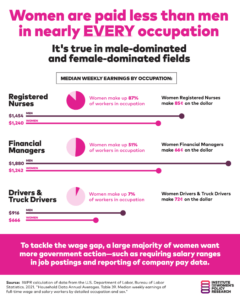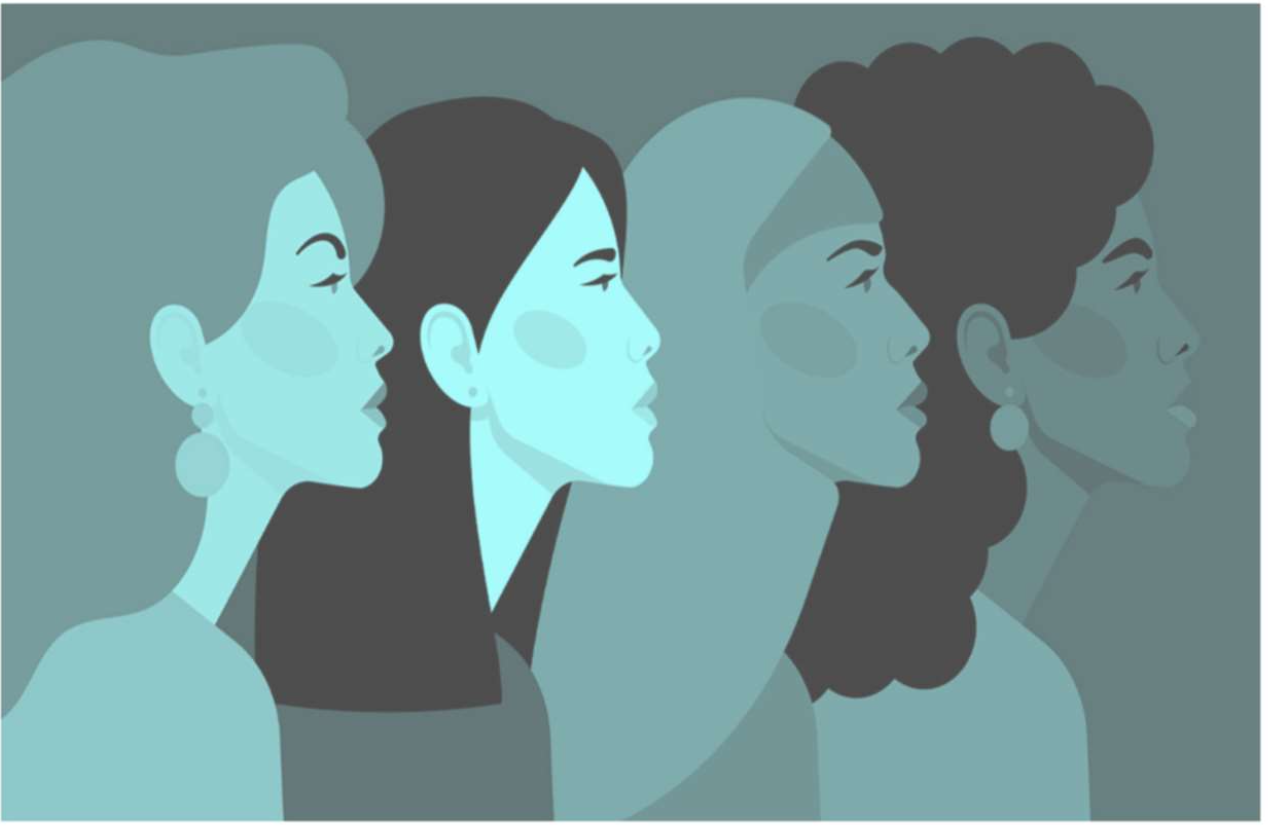FOR IMMEDIATE RELEASE
March 22, 2021
Contact: Liz Rose | Rose@iwpr.org| (202) 355-3559
Washington, DC – To highlight Equal Pay Day, 2021, the Institute for Women’s Policy Research (IWPR) is releasing an analysis of the Gender Wage Gap by Occupation, Race, and Ethnicity for 2020, along with highlights from a new national IWPR survey, which shows that the women want the government to do more to close the gender wage gap.
IWPR’s analysis of 2020 weekly earning data finds that women earned less than men in almost all occupations, including in all of the most common occupations for women and all the most common occupations for men. Of 120 occupations with enough data for calculating the gender wage gap only five had higher earnings for women than men, and those earnings differences were marginal.
In the lowest paid of the largest 20 occupations for women, Maids and Housekeepers ($503 per week), women are nine-in-ten workers (and face a wage gap of 10.6 percent); in the highest paid of the largest 20 occupations for men, Chief Executives ($2,402 per week), women are fewer than one-in-three workers (and face a wage gap of 24.4 percent).
“Women’s median weekly earnings in six of the largest 20 occupations for women leave a family of three near poverty,” said Ariane Hegewisch, IWPR Senior Research Fellow, noting that in three of these, so do men’s median weekly wages. “Latinas in Service Occupations – including many essential occupations during COVID- earn only 67 cents on the dollar made by White men in these jobs, and Black women just 69 cents. Even in these very low paid jobs there is a substantial wage gap.”
“Black women and Latinas deserve more opportunities to move into work that pays higher wages,” said IWPR’s president and CEO C. Nicole Mason. Mason noted that there are upcoming opportunities for the government to deliver solutions to scale to raise wages and diminish the wage gap including raising the minimum wage and including training programs, set-asides and strong oversight on gender diversity in the infrastructure package. “There is no good reason for gender differences in earnings,” Mason added. “The wage gap is a fixable problem.”
IWPR’s surveyed more than 1,400 women in March, 2021 and found that
More than 70 percent of women say the government should do more to tackle the wage gap:
- Three of four women think the government should require all companies with 100 or more employees to report gender and pay information
- Eight out of ten women want the government to require companies to include a wage or salary range in job postings
- Two out of three women want employers prohibited from asking job applicants about previous pay




